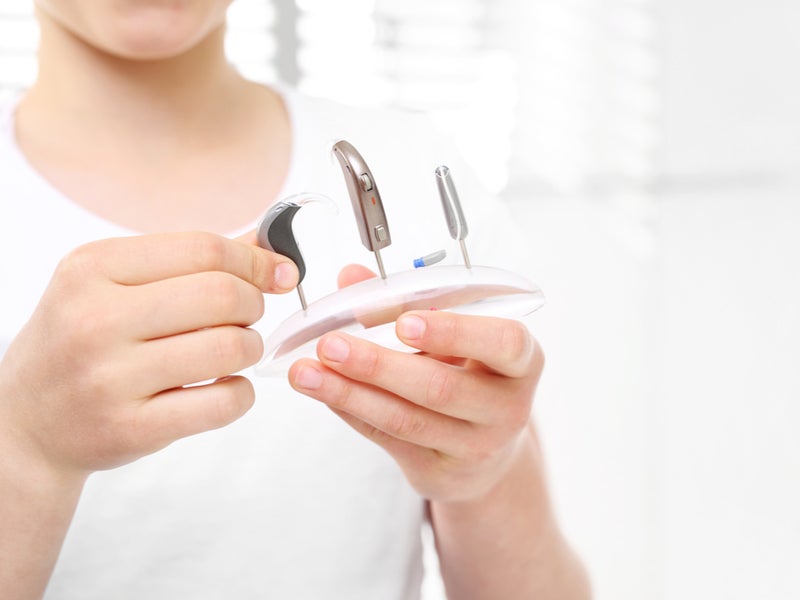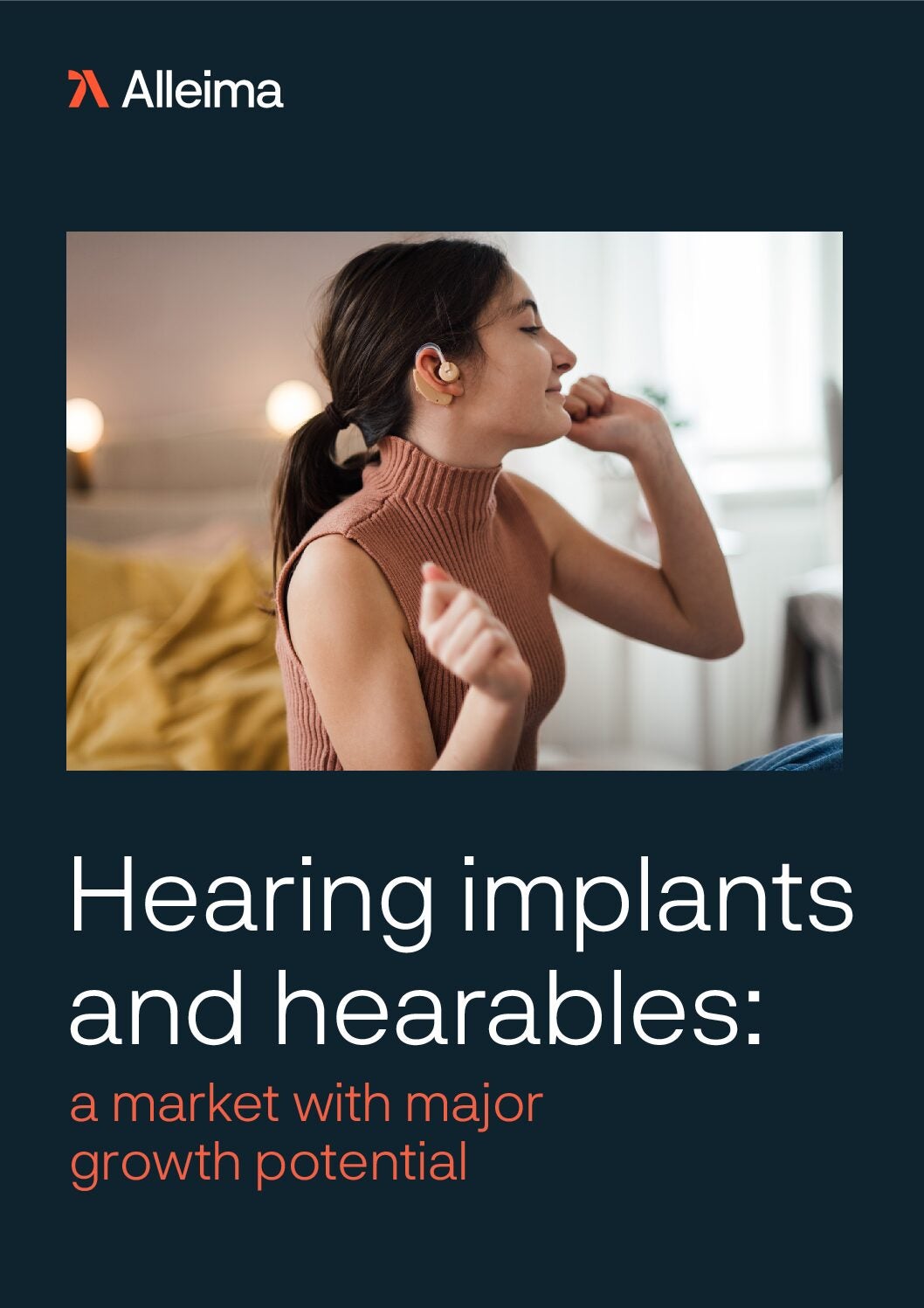
1995 – Oticon develops the first digital hearing aid
Oticon introduced the JUMP-1 digital hearing aid platform, the world’s first digital hearing aid device. The devices were offered to 14 approved audiological centres worldwide, to enable them to develop their own digital solutions for hearing impaired patients. The behind the ear (BTE) device supported software which allowed reprogramming, and attempted to utilise different signal-processing systems over extended periods of time, to allow for normal daily use. The dame technology was used in Oticon’s first commercially available hearing aid, the DigiFocus, which was brought to the market the next year.
1996 – Widex makes the first digital hearing aid for commercial use
Widex’s Senso was the first digital hearing aid to be fully commercialised. The Senso boasted fully-automatic digital adjustment, with the user needing only to choose whether to activate the microphone or telecoil input. Everything else was adjusted automatically, meaning unwanted noise could be efficiently filtered out. Senso was fitted to the needs of an individual user by their clinician, and had its own built-in audiometer.
How well do you really know your competitors?
Access the most comprehensive Company Profiles on the market, powered by GlobalData. Save hours of research. Gain competitive edge.

Thank you!
Your download email will arrive shortly
Not ready to buy yet? Download a free sample
We are confident about the unique quality of our Company Profiles. However, we want you to make the most beneficial decision for your business, so we offer a free sample that you can download by submitting the below form
By GlobalDataWidex sold 100,000 of the Senso just six months after their launch. A survey by Bergen University Hospital established that Senso users found it easier to understand speech in noisy surroundings than users of other devices, a problem many manufactures had struggled with for years. The survey also found that Senso users kept their aids in for more hours of the day than users of other hearing aids.
2001 – Oticon employs voice-targeting technology
Oticon began to use the VoiceFinder speech processing system in its Adapto hearing aid. VoiceFinder allowed fully prescribed amplification when speech was present, but dialled down to ‘comfort mode’ when no one was talking. This meant Adapto was able to optimise a user’s understanding of speech without simply increasing volume and leaving them overwhelmed with other sounds, as well as decreasing feedback and distortion when listening to their own voice.
2004 – Oticon Syncro becomes the first aid to utilise AI for processing
Artificial intelligence (AI) reached hearing aid technology in 2004, when the Oticon Syncro began to use AI to in its voice priority processing (VPP) system. This system was able to take the aid’s Multi-band Adaptive Directionality, Tri-State Noise Reduction and Voice Aligned Compression to the next level.
Prior to Syncro, features such as directional microphones, noise reduction and feedback cancellation could struggle to function in unpredictable sound environments such as busy streets, office settings and crowded restaurants. However, using the AI VPP, Syncro was able to process different combinations of its unique features in parallel to select the specific combination that gave the clearest signal at a given point in time.
2005 – Bluetooth wireless technology is introduced to hearing aids
Starkey Laboratories introduced the ELI device, enabling hearing aids to be compatible with Bluetooth-enabled mobile phones for the first time. Named by Time magazine as one of the best inventions of the year, the buzzing and interference mobile phones used to cause with hearing aids was eliminated as Bluetooth technology was used to route calls directly into the earpiece itself.
The device was designed to plug into the bottom of behind-the-ear hearing aids and route calls directly from the phone through ELI and into the aid. For users of other type of hearing aid, the ELI device could be work on a necklace and linked to the hearing aid via analog wireless.
2010 – Widex releases the first hearing aid designed for babies
Widex released the BABY 440 hearing aid, the first digital aid specifically designed for babies. Set up to provide high quality sound to infants with minimal to moderate-severe hearing loss, the aid’s miniature size and light but tough materials meant it fit comfortably and securely in small ears.
2014 – GN ReSound launches the first Made-for-iPhone hearing aids
The ReSound LiNX and corresponding Beltone First were the world’s first Made-for-iPhone (MFi) hearing aids. As well as being powerful enough to address 90% of hearing losses, the devices’ MFi connectivity allowed direct streaming of sounds from iPhone, iPad and iPod products, allowing users to treat their aids are wireless headphones or to talk on the phone without the need for an intermediary device.
The ReSound Smart app designed to accompany the devices allowed users to set preferred volume levels and treble/bass settings for the audio streamed into their hearing aids, as well as use geotagging to adjust the aids’ settings to the acoustics of frequently-visited places like home, work and favourite restaurants. The app also featured a geotagging function to help users locate their hearing aids if misplaced.
2016 – IoT enabled hearing aids reach consumers
The Oticon Opn is the first Internet of Things (IoT) enabled hearing aid, which could be programmed to communicate directly with a range of connected devices such as doorbells, smoke detectors and baby alarms through its If This Then That (IFTTT) technology. This enables a sound such as a spoken notification or chime to be delivered through the hearing aids when these devices are triggered, ensuring the users’ hearing loss doesn’t mean they miss vital notifications from the devices.
The Opn does this using a patented dual communication system called TwinLink that combines binaural processing with streamer-free internet connectivity, without compromising battery life or physical size.
2019 – Starkey launches sophisticated AI-powered health monitoring aid
The Livio AI hearing aid is the first ever to use integrated sensors and AI to monitor the user’s health. Through the accompanying Thrive app, Livio AI hearing aids use accelerometers and gyroscopes to track the wearer’s physical and mental health for an overall daily wellness score.
Ideal for elderly and frail aid users, these sensors can detect when a fall occurs and send a text message to up to three emergency contacts, using AI to detect what is an isn’t within the normal range of motion for the user to avoid any false alarms.




